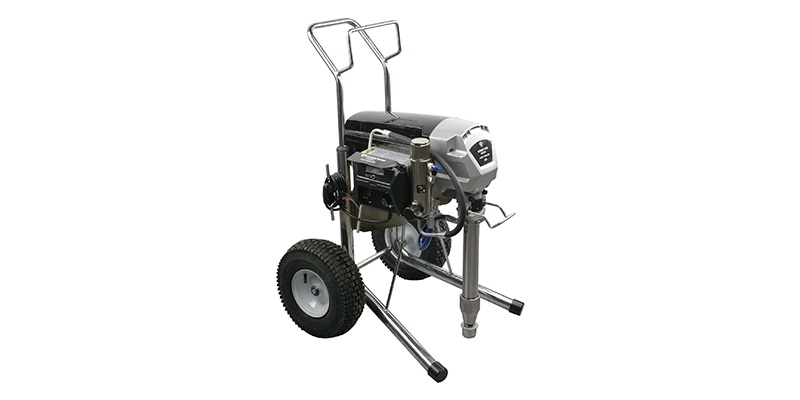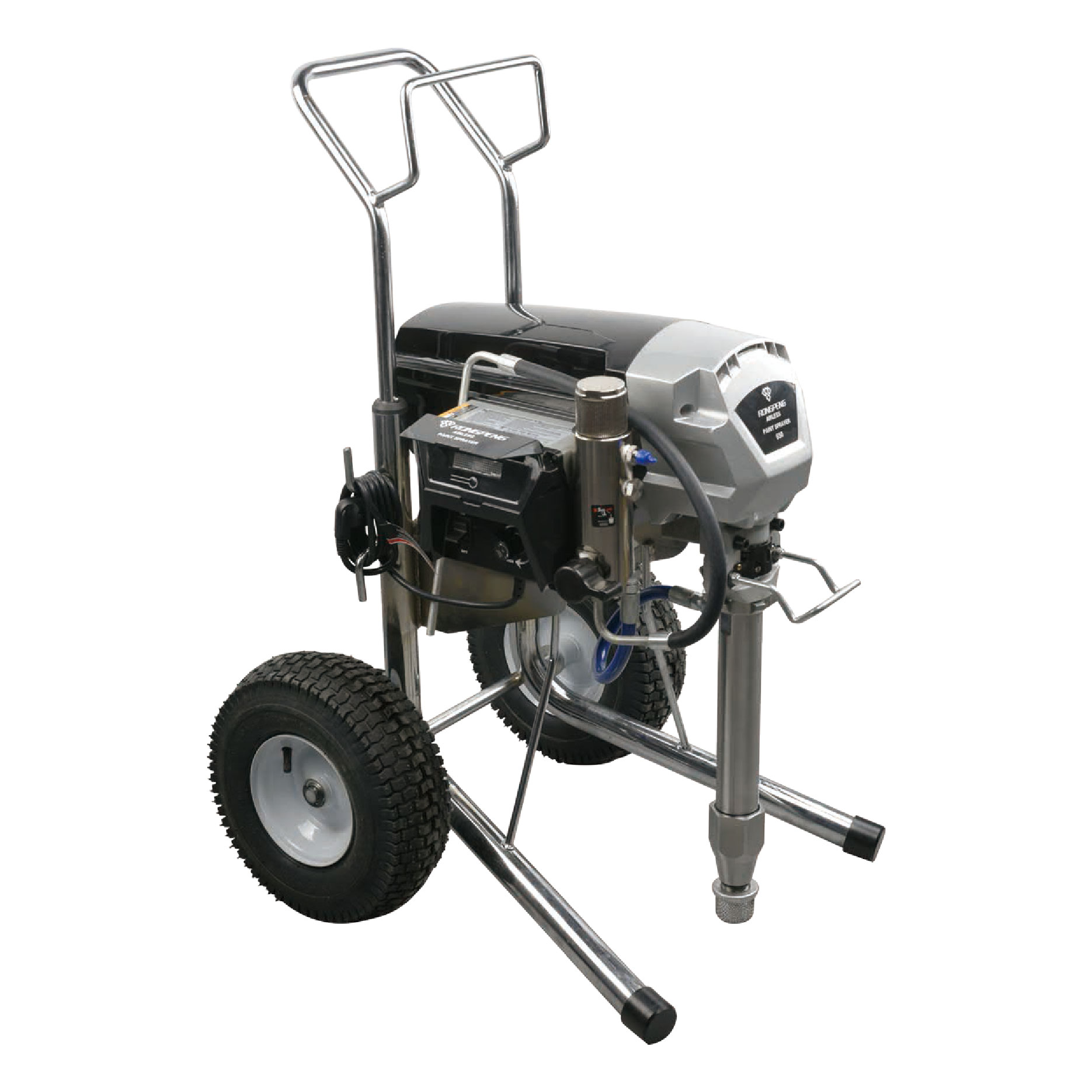

You should know that painting outdoors with airless sprayer requires some special considerations compared to indoor painting. Through these insights from years working can achieve perfect results for your outdoor painting projects.
Masking And Protection
Take the time to properly mask off any areas you don't want painted with masking paper and tape. Lay drop cloths to protect plants, groundcover, and non-painted areas from overspray fallout. Remove all loose items and cover things like exterior light fixtures with plastic sheeting.
For intricate trim details or unusual architectural surfaces, use a paint brush or small touch-up tools rather than trying to wrangle the sprayer in tight spaces where overspray is more difficult to control.
Adjust Equipment Settings for Outdoor Use
Professional airless paint sprayers feature adjustable pressure settings to control the fan pattern size and flow rate. When spraying outdoors, use the lowest pressure setting required to fully atomize the coating for your application. Higher pressures create more overspray and increase the chance of wind drift issues.
For large, open exterior areas, a wider fan pattern at lower pressure is often more efficient. For cutting in corners, trim, or other tight spaces, use a narrower spray fan to reduce overspray. Always test your spray pattern on a inconspicuous area before starting your main surfaces.
Make sure to use tip sizes and sprayer components compatible with the coatings you'll be spraying. Exterior paints, stains, and thicker coatings require larger orifice sizes to spray properly without excessive clogging or tailing issues.
Mastering Outdoor Conditions
Spraying exterior surfaces means working in an ever-changing outdoor environment of wind, humidity, sun exposure, and temperature variations. Mastering these constantly shifting conditions is vital for achieving a quality paint job.
Wind can obviously wreak havoc by blowing your spray off target and causing "dry spray" issues. Try to pick a low-wind day and position yourself spraying into the wind direction. Use Wind Barriers like tarps or plywood sheets secured to fence or saw horses to block gusts.
Humidity levels between 40-70% are ideal for most exterior latex paints. Higher humidity can cause excessive drying times and potential film issues. Lower humidity means faster drying which increases the risk of dry spray. An extender additive can help compensate in either situation. As for temperature, most latex paints should be applied between 50-90°F. Colder temps will severely retard drying, while hotter temps can cause paints to skin over or develop other defects.
Direct sunlight can also wreak havoc by causing coating defects from the heat and rapid surface drying. Try to position yourself spraying in shaded areas or wait for cloud cover if possible.
Finally, avoid extreme temperature swings like those cold morning starts followed by blasting afternoon heat. Drastic temperature fluctuations can cause the coating to dry in odd patterns or develop craters, pitting, and bubbles on the surface. It's best to spray in moderate, consistent temperatures for uniform curing.
Know Your Coatings and Cure Times
Full cure times for outdoor coatings to reach maximum hardness and weathering resistance can range from a couple days to a couple weeks depending on temperature and humidity conditions. Plan your painting schedule accordingly and avoid premature exposure of freshly coated areas to water, abrasion, or weathering during this critical cure phase.
Recommend using 100% acrylic latex paints for most outdoor painting needs. These water-based coatings have excellent color retention, resist cracking and peeling, and clean up easily while still wet.
Oil-based alkyds provide a harder, more moisture-resistant shell, but can become brittle over time. Newer acrylic-alkyd hybrid formulations combine the best properties of both.
Other specialized outdoor options include elastomerics for flexing with building movements, high-heat coatings for grills or automotive refinishing, and anti-fouling bottom paints for marine applications.

For professional painters and contractors, the RONGPENG R750 Airless Paint Sprayer is designed to help you work more efficiently. It has 5HP power brushless motor, get more work done. Low per minute 2000 unique inductive intelligent recognition nozzle technology. The biggest can support 731 nozzles, improve construction efficiency. Robust all-metal construction withstands heavy duty use on worksites while the convenient cart design allows effortless mobility.
Handle a wide range of coating materials, wall emulsion paint, coating, colorants, steel structure anticorrosion paint, epoxy paint, enamel paint, etc.
Voltage/Frequency:220V(50Hz)
Motor size:5HP(3800W)
Max pressure:3300PSI(227bar)
Standard Nozzle size:625(0.025")
Flow rate:6L/min
Max.Pressure for the hose:83Mpa
Length of High Pressure Hose:30m
Max spray tip:731(0.031")
Weight:55kg(121lb)
RONGPENG has quickly risen to become an unrivaled global producer of air-powered devices including air tools, air spray gun, air nailer, airless paint sprayer, and etc.
RONGPENG seeks independent sales agent to represent and market our industry-leading pneumatic tools. We support OEM, ODM, OBM customization, small order quantity is acceptable and samples are available.
Make any cooperation possible. Any services related to the product, inquire with us now! Rongpeng@Rongpeng.Com